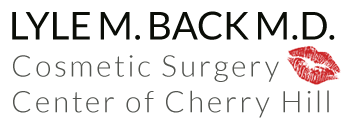So What Ever Happened To The “Browlift?”
Plastic Surgery has been around for a long time. Its history and family tree are rooted in surgery – hence its name! Most people could easily rattle off a list of the most “stereotypical” of Plastic Surgery procedures – breast implants, liposuction, tummy tuck, “nose job” or the facelift. Our vocabulary echoes our familiarity. We talk about, for example, someone’s home improvements as undergoing a “facelift”. Doctors embarking on a career as a plastic surgeon must undergo intensive training after graduating medical school in their attempt to achieve the status of a board certified plastic surgeon. Plastic surgeons are surgeons – they work in operating rooms and surgicenters, applying their craft and talents to reshape and sculpt the face and body using sophisticated surgical techniques.
Or do they?
Most of the top talented and skilled plastic surgeons today have become a part of the irony in the evolution of plastic “surgery”. Namely, that the “surgery” aspect of the specialty has increasingly taken more and more of a “back seat” to the non-surgical side over the past several years. These are welcome, wonderful changes – the techniques are less invasive, less costly, less risky, and often with little or no recovery to speak of. But when more of what you do is non-surgical rather than surgical, it does seem a bit odd to still call oneself a “surgeon”.
In 2005, there was a 10% increase in the number of cosmetic procedures performed in the U.S., yielding a final total of some 10 million plus total cosmetic procedures for the year! But an incredible 80% of that increase was due solely to the increased popularity of non-surgical procedures. For the first time since statistics like these were being followed, the classic calling card surgery of the plastic surgeon – the facelift – was no longer among the top five most popular surgical procedures! What happened? One word – Botox®!
Long before 2005, Botox® had begun helping people to look younger, more rested, and more awake by actually eliminating the cause of their wrinkles rather than by surgeons trying to tighten, iron out or burn the wrinkles away. The wrinkles are truly gone because the tiny muscles responsible for them are relaxed for months at a time by a single, simple, office Botox® treatment. The wrinkles are not being made and the longer they are gone the less intense they come back, if ever. Combine all that with higher, better arched eyebrows, a more “open” look to the eyes, and a smoother, less line-burdened forehead and things like browlifts and facelifts just don’t seem all that necessary for whole lot of people. How many people? Over 4.5 million Botox® treatments are performed annually in the U.S. alone!
In 2006, there was another 10% increase in the number of cosmetic procedures, but once again, 80% of that increase was due to people having more and more of the non-surgical procedures. Nonsurgical procedures, already comprising well over 80% of all the cosmetic procedures being performed in the U.S., had begun to grow at more than double the pace of that for surgical procedures. In almost every year since 2005,that gap has been ever-widening. The browlift had become quite unpopular, joining several other facial surgical procedures rendered less desirable as options as compared to simple Botox® treatments. Botox® use was now responsible for nearly half of all the nonsurgical procedures being performed each year!
In 2008, this gap significantly widened. Cosmetic procedures took their hit as a faltering economy led to an overall 10% decrease. But nearly 100% of this decrease was for surgical procedures alone. Non-surgical procedures were essentially unaffected. Botox® use had actually increased by 537% since the year 2000! Meanwhile, browlift numbers had plummeted by more than 65% during that same time frame!
In 2009, the surgical/non-surgical numbers gap took an even bigger quantum widening leap. As the poor economy lingered, surgical procedures sustained another drop of about 10%. But non-surgical procedures actually showed an increase in numbers by 10%!
Browlifts have continued to be a shadow of their former glory, almost like a surgical antique, while Botox® seems to gain more satisfied supporters every day. Botox® has continued to grow in popularity, and is currently up by about 584% over the past 10 years! So, what ever happened to the browlift? It is almost gone, but not forgotten, and still has a value and use to Plastic Surgeons and their patients alike. However, the browlift is clearly just one of many casualties in the war between non-surgical and surgical procedures. A war which has resulted in non-surgical procedures becoming the dominant part of what Plastic “Surgery” is really all about, and what it most likely will be increasingly all about in the foreseeable future.
Dr. Lyle Back is originally from New York City, receiving his medical and surgical training at Rutgers Medical School, Cooper Hospital – University Medical Center, and Ohio State. He is Board Certified in General Surgery (ABS) and Plastic Surgery (ABPS). He is a Fellow of the American College of Surgeons (ACS), the American Academy of Cosmetic Surgery (AACS), and a longstanding member of the premier American Society of Plastic Surgeons (ASPS). He specializes in the full range of the most modern and state of the art facial cosmetic surgery procedures and non-surgical cosmetic enhancement techniques available today.
